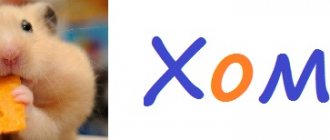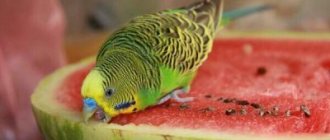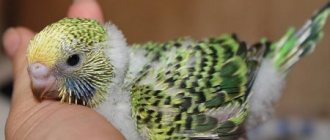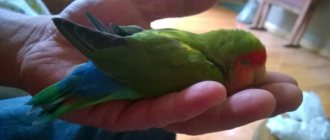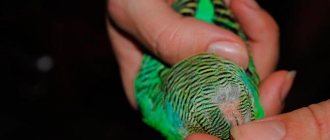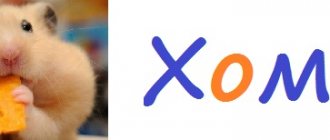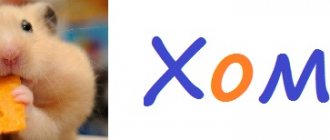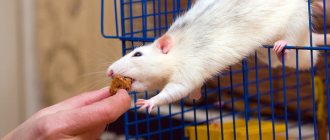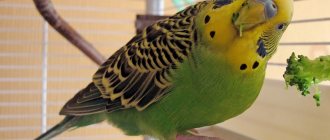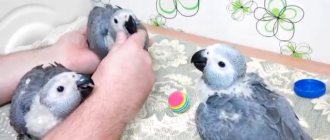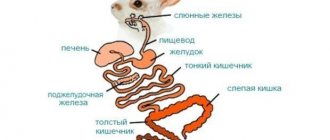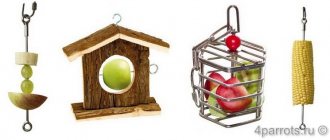One of the reasons for the popularity of budgies is the birds’ unpretentiousness in terms of nutrition. Unlike cockatoos, macaws or African grays, your pet does not require premium food or any specific additives. Nevertheless, the bird's diet should be varied, which in addition to grain food should include fruits, vegetables and cereals.
Basic principles of nutrition for budgies
The food must contain proteins that ensure vital functions and participate in various metabolic processes. To maintain energy and form fat, carbohydrate intake is important. A large role is given to vitamins A, D, E, K, group B and others.
Minerals are involved in the formation of egg shells and skeletal bones. Their birds are obtained from greens, fruits, and mineral supplements. The necessary components include water.
What can you give a budgie besides food list
All elements must be supplied in a certain balance. Both a deficiency and an excess of one of them not only causes a disruption in the functioning of the body, but also leads to improper absorption of other substances and illness of the feathered friend.
The type and amount of food in the diet depend on the parrot’s age and activity. Thus, individuals living in cages require less of it than when kept in an enclosure.
What is forbidden to feed?
Now that we know what can be given to budgies, let's talk about forbidden foods. Among the vegetables prohibited for parrots are: radishes, celery, onions, eggplant and garlic. Prohibited foods include some fruits: avocado, mango, persimmon. In addition, any herbs (parsley, cilantro, dill) can ruin the health of the bird.
Many people ask questions about what other food is not included in the list of permitted foods. Products such as bread (made from salt, yeast or low varieties of wheat), salt (this is poison for this type of bird), milk (parrots do not have enzymes to process it), chocolate can also be detrimental to the health of these birds.
Subspecies of food for birds
They are divided into the following groups:
- grain mixture;
- juicy greens;
- animal origin;
- vitamin and mineral supplements.
Parrots are herbivorous representatives of the fauna. At home, the basis of their diet is mixtures of seeds of various herbs. Other supplements supplement the diet.
Feeding budgies at home
Porridge
Porridges for budgies and lovebirds are prepared from the same ground grains, for example, millet or corn flour; oatmeal and rice flakes are also consumed with great enthusiasm.
Porridges are cooked in water; milk and any dairy products, with the exception of cottage cheese, kefir, yogurt and fermented baked milk, should be excluded from the bird’s diet. Also, the porridge is not salted or sugar or any other ingredients besides water and flour are added to it, therefore the product that is prepared by a person for his own consumption is not suitable.
Grain mixtures as the basis of poultry nutrition
What does it contain?
The most significant part, up to 50-60%, is millet of different varieties. This is the cheapest type of seed, containing mainly carbohydrates. Red millet is not easily eaten by parrots, however, its presence is also necessary due to its abundance in the composition. Smaller, most protein-rich, canary and oilseeds. The content of oats in the mixture is limited to 30% of its volume, otherwise the parrot will suffer from constipation.
Read also
Food Rio for budgies reviews
Daily intake of grain food for a parrot
The wavy should receive approximately two teaspoons of grain per day, i.e. about 12-15 grams. It is advisable to divide it in equal parts into the morning and evening.
If we talk about individual types of seeds, their approximate amount (in grams) in a daily serving is as follows:
What do budgies eat?
- millet - 10.0;
- canary seed – 1.0;
- oats – 5.0;
- crushed sunflower kernels – 1.0;
- oatmeal – 2.0;
- wheat – 1.0;
- hemp – 1.0;
- barley – 2.0;
- flaxseed – 2.0.
Store-bought or homemade – which is better?
You can prepare grain mixtures yourself or purchase them at a pet store. Their range is quite wide. Previously, it was believed that domestic producers often violate the rules for growing, storing, and transporting seeds and that offering their products to a pet is dangerous. However, if it is not possible to give your pet imported grain mixtures, it is permissible to replace them with a well-proven Russian analogue.
You can prepare grain feed yourself. If you manage to grow the necessary plant crops in environmentally friendly conditions and have the skill to determine the maturity of seeds and harvest, then your pet is very lucky. Otherwise, there is no point in purchasing ingredients separately for subsequent mixing. The products of the most popular brands are already balanced in composition to suit the needs of your pet, and often contain seeds of crops that cannot be found in their pure form.
WHAT TO FEED A BUDGY PARROT? FOOD OF THE BUDGET PARROT
Ready mixes
Budgerigars love ready-made nut and grain mixtures. Everything is clear with grain, the mixture can consist of corn, oats and wheat, rice mixed with millet. It is more difficult to make a nut mixture yourself, primarily because some types of nuts are contraindicated for budgies and any other representatives of the species.
Mixtures containing pistachios, pecans, sweet almonds and madacamia, and peanuts (need to be peeled) are considered ideal in composition and taste.
What are the benefits of sprouted grains for a budgie?
In the wild, budgies most of the time feed on all kinds of shoots and unripe seeds. Food made from sprouts, the composition of which is as close as possible to their natural diet. During the birth of a plant inside the grain, its biochemical composition changes, the content of vitamins B and E increases, and enzymes are formed that improve the digestion process.
It is especially important to supplement the diet with sprouts during the breeding season. However, if you are not confident that you will be able to maintain the required quality of the product, it is better to avoid this additive altogether. If the technology is not followed, dangerous microorganisms and fungi can easily grow in it. Igor Ignatenkov
How to prepare food from sprouts?
To prepare it, it is recommended to take raw oats and mixed grain feed in a 1:1 ratio. After washing, the composition is filled with water and infused for about a day. Then the unusable floating grains are removed, and the remaining ones are thoroughly washed and poured into a sieve. It is placed above the dish with the next portion of the mixture so that the evaporating moisture moistens its contents. After 24 hours, these seeds are moved to a seedling box for a day at a temperature of about 22 degrees. It is necessary to carefully monitor the condition of the seedlings and the cleanliness of the tray to prevent mold from forming.
What to feed a budgie if you run out of food
How to cook it correctly - recipe
Before cooking the cereal, rinse thoroughly with running water. Professional ornithologist breeders recommend steaming grains in a thermos or a simple thermal mug . That is, add cereal, pour boiling water over it, close the lid tightly and put in a warm place for a couple of hours.
Afterwards the water is drained and the porridge is allowed to cool slightly. To quickly reduce the temperature, the composition can be washed with water. To preserve maximum nutrients, the cereal is soaked in cold water for 12-14 hours. The liquid must be filtered. It is better not to use ordinary running water.
You cannot add salt, sugar, oils and seasonings when preparing porridge . All this can cause serious harm to the animal’s gastrointestinal tract.
As for portions, the norm for budgies is about 1-1.5 teaspoons. The product must be heated, but not hot, otherwise the bird will burn its crop. A cold mixture is harder to digest.
Juicy food for parrots
Vegetables and greens in a pet's diet
Your pet needs fresh herbs all year round. Plants such as:
- large or holly plantain;
- quinoa;
- dandelion;
- sorrel;
- sagebrush;
- woodlice;
- young nettle;
- yarrow;
- unripe oats or millet.
It is imperative to monitor the environmental cleanliness of the plant collection site, the absence of nearby roads, factories, and construction sites. You can replace these herbs with lettuce, valerian, spinach, beetroot, as well as carrots, celery, and parsley.

